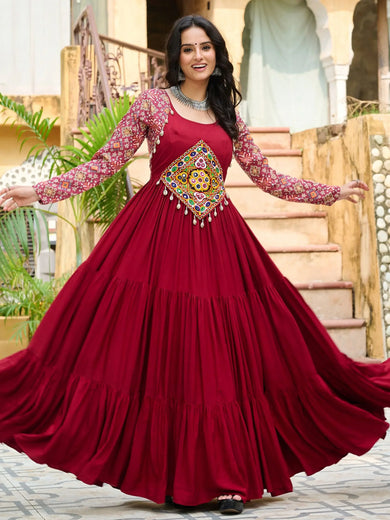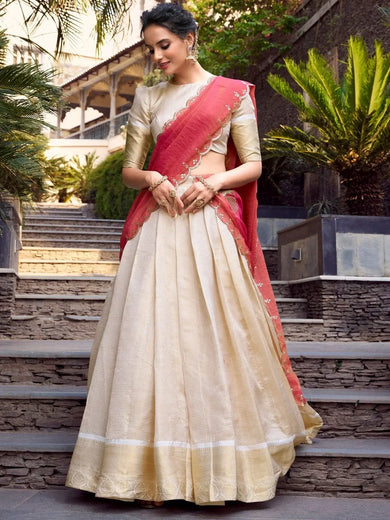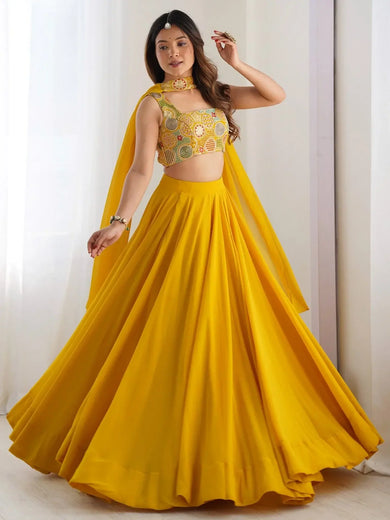The Elegance of Sarees: A Deep Dive into the History and Significance of Sarees in Indian Culture
The saree is more than just a piece of clothing; it symbolises India's rich cultural heritage, dating back thousands of years. This in-depth exploration of sarees will reveal the intricacies of their history, cultural significance, and long-lasting appeal.
Ancient Origins:
The history of sarees can be traced back to the ancient Indus Valley Civilization, making it one of the world's oldest known garments. It is believed that early depictions of saree-like drapes were depicted in sculptures, paintings, and texts of this time, likely simple unstitched garments draped gracefully around the body. From its earliest forms, the saree reflects the cultural identity of the Indian subcontinent.
Evolution through the Mughal Era:
The Mughal era influenced Indian textiles from the 16th to 19th centuries. With a combination of Persian and Indian influences, richly embroidered and intricately embellished sarees emerged. As a result of the enduring influence of the Mughal period on Indian fashion, the luxury of motifs and designs still echoes in sarees worn during grand celebrations and weddings.
Regional Diversity and Unique Weaving Techniques:
An enchanting aspect of sarees is their incredible diversity across regions across the Indian subcontinent. Every state and region of India has a unique weave tradition, fabric, and draping style that contributes to the rich tapestry of Indian textiles.
Banarasi Sarees:

Banarasi sarees are noted for their exquisite silk fabrics and intricate zari designs. Mughal-inspired patterns dominate these sarees, making them trendy for weddings and celebrations.
Kanjeevaram Sarees:

Kanjeevaram sarees, produced in the temple town of Kanchipuram in Tamil Nadu, represent the cultural heritage and craftsmanship of the South Indian people. The silk fabric, vibrant colours, and contrasting border adorn these sarees, which are adorned with temple motifs and symbolise the rich history and cultures of the region.
Bandhani Sarees:

Originating from the colourful states of Gujarat and Rajasthan, Bandhani sarees are characterised by their tie-dye patterns. These sarees are perfect for casual wear and add a playful, youthful charm to any outfit.
Chanderi Sarees:

Produced in Chanderi, Madhya Pradesh, these sarees are celebrated for their lightweight and sheer texture. Delicate handwoven motifs make them ideal for warm weather and casual occasions.
Paithani Sarees:

From the western state of Maharashtra, Paithani sarees are known for their intricate peacock motifs and vivid colours. These opulent sarees symbolise the Maharashtrian culture and are often worn during traditional festivities.
Contemporary Resurgence:
The saree has been revived as fashion trends evolve. Leading designers have created sarees that appeal to younger generations' tastes. Sarees today come in various fabrics, designs, and styles, making them a versatile choice for weddings, cocktail parties, and more.
The Art of Saree Draping:
Different regions in India have unique draping styles, and the style choice is either a personal preference or dictated by tradition.
Nivi Saree Style (Andhra Pradesh):
The most common and widely recognised method involves neatly pleating the front portion and allowing the pallu (the loose end) to flow gracefully over the left shoulder.
Bengali Style (West Bengal):
Bengali women drape their sarees distinctively with box pleats in the front and the pallu wrapped in a circular manner around the body. The choice of red and white sarees is particularly associated with Bengali culture.
Gujarati Style (Gujarat):
The Gujarati style incorporates multiple pleats, drapes the pallu over the right shoulder, commonly associated with Bandhani sarees, and is a hallmark of Gujarati tradition.
Maharashtrian Style (Maharashtra):
The Maharashtrian drape style involves a shorter saree length and pins the pallu to the right shoulder, which is particularly suited for traditional Paithani sarees.
Kerala Style (Kerala):
In Kerala, sarees are generally cream or white with gold borders and are draped in a two-piece style, with the lower garment known as the mundu. The pallu covers the left shoulder.
Relevance in the Modern World:
The enduring appeal of sarees in the modern world can be attributed to several factors.
Versatility:
The saree is incredibly versatile and can be styled for various occasions, from formal to casual occasions to traditional occasions.
Empowerment:
Women in influential roles, like politicians, businesswomen, and artists, wear sarees to express their authority and confidence.
Red Carpet Glamour:
The stunning ensembles of stars such as Deepika Padukone, Priyanka Chopra, and Aishwarya Rai Bachchan have gained global attention and admiration for their saree ensembles.
Sustainable Fashion:
The handwoven nature of sarees and the use of natural fibres make them an eco-conscious fashion choice.
Expression of Culture:
Wearing a saree enables individuals to express their regional identity and connect with their roots, regardless of their location.
Conclusion
The saree represents India's rich cultural heritage at Ethnic Plus, combining ancient traditions with contemporary elegance to create a timeless garment. Despite continued changes and adaptation, the saree remains a garment that transcends mere fashion, embodying a vibrant, diverse nation's spirit and identity.







